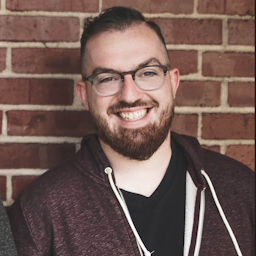- Home
- Newsletter
- Founder Math: When to Stop Searching and Start Choosing with the 37% Rule
Founder Math: When to Stop Searching and Start Choosing with the 37% Rule

The Big Idea
By using a bit of math called the optimal stopping problem, you’ll learn exactly when to stop second-guessing yourself, and start making confident decisions, whether you’re choosing features, hiring teammates, or testing new ideas.
Two simple rules for decision making
The optimal stopping problem comes from probability and decision theory. It describes how find the balance between time and quality when searching for the best option in a given set. The math behind optimal stopping is fairly complex, but the rules are simple.
For our purposes, we can use two simple rules to guide decision making:
- Rule 1: If you know how many options you have, use the first 37% of them to get a sense of the quality of your options, then choose the next item that is better than all of the previous items.
- Rule 2: If you don't know how many options you have, use the square root of the number of options you have seen so far to guide your decision.
These two rules give you a surprisingly effective way to stop overthinking and start acting.
Applied science: hiring engineers
Hiring software engineers is always tricky: posting a job opening online results in a flood of applications, and you're left with the difficult task of sifting through them to find the best fit.
In practice, everyone you interview will also be interviewing with other companies. This means you can't keep applicants waiting around while you interview everyone who applies. Sit on a good candidate for too long, and they'll be snapped up by another company.
It's a problem that is perfect for the 37% rule.
If you post a job and get 20 applicants in the first day, you can plan ahead. That’s where the 37% rule works best: interview the first 7 candidates just to set the bar, then hire the next person who’s better than everyone you’ve seen so far.
If you're hiring on a rolling basis, you don't know how many candidates will apply, the √N rule helps. Say you’ve looked at 16 resumes so far, that’s √16 = 4. Once you’ve seen four solid benchmarks, you’re ready to grab the next standout.
Applied science: Influencer and Partner Outreach
Marketing often comes down to people. You might have a long list of influencers, newsletter authors, or potential partners you want to reach out to for an ad partnership - but when do you stop searching for more and commit to building a relationship?
If you know the list size in advance (say 30 people), use the 37% rule: spend time with the first 11 to understand what quality looks like, then commit to the next standout who outshines the rest.
If your outreach is open-ended and you don’t know how many conversations you’ll have, use the √N rule instead. After you’ve talked to 16, that’s √16 = 4. Once you’ve met those first four, you’re in a strong position to recognize and act on the next really promising relationship.
"Perfect" partners for influencer marketing don’t exist. Better to stop searching, commit, and grow the relationship once you've found a good fit.
Conclusion
This is definitely a don't take my word for it kind of thing - variations of the optimal stopping problem are used all over the place: from options trading, to finding your next high-paying job, this exact kind of logic has been used to make smarter decisions without the analysis paralysis.
So if they can do it, you can too.
Further reading
If this idea hooked you, there is loads more to learn. I'd recommend starting with these:
-
The wikipedia article on Optimal Stopping Problem has a handful of great examples of optimal stopping in action, and links to deeper mathematics from a variety of fields, including computer science, economics, and finance. Definitely worth a dive.
-
As you might expect, the Numberphile YouTube channel has a great video on this topic: The Mathematical Way to Choose a Toilet.




